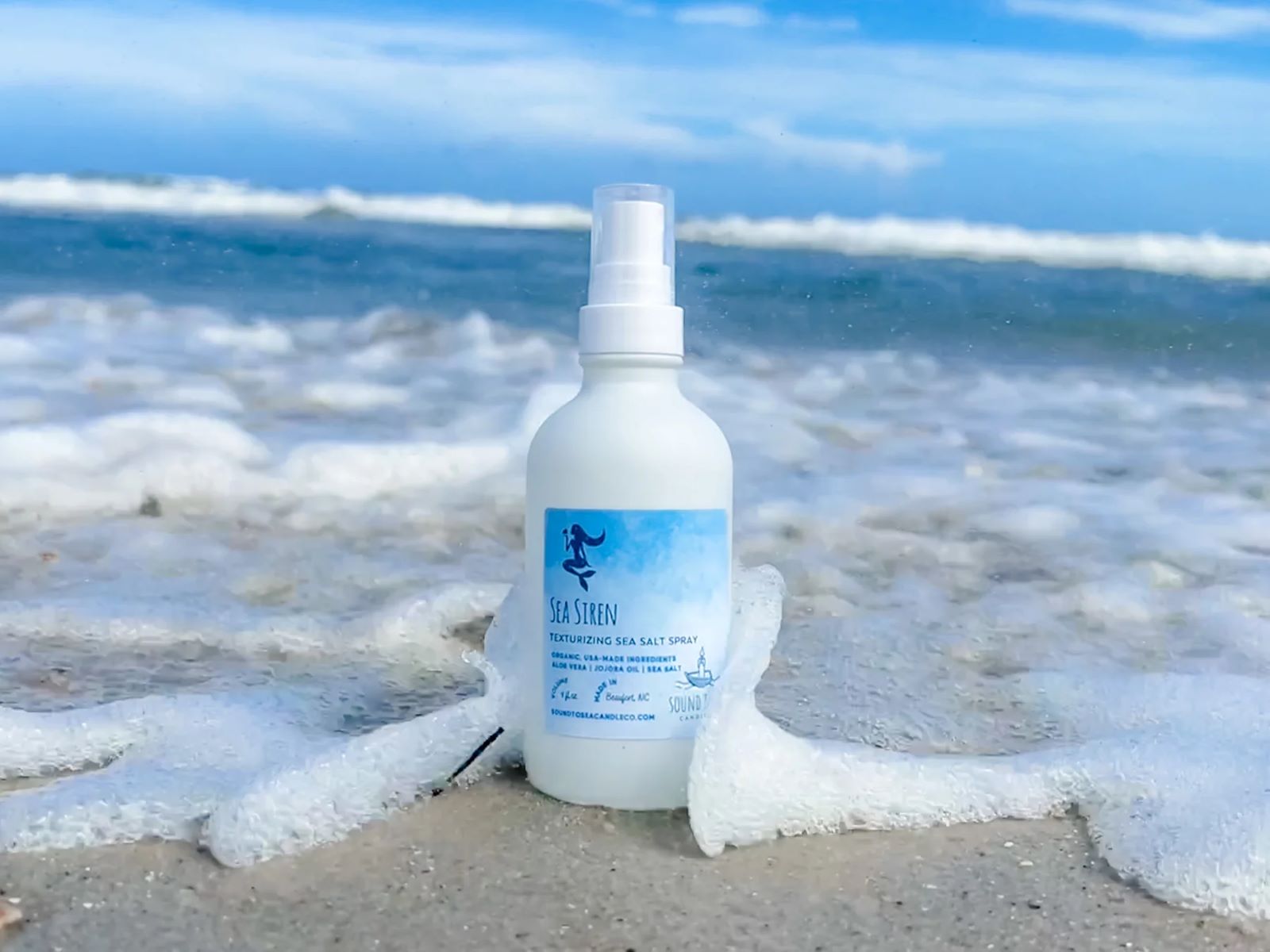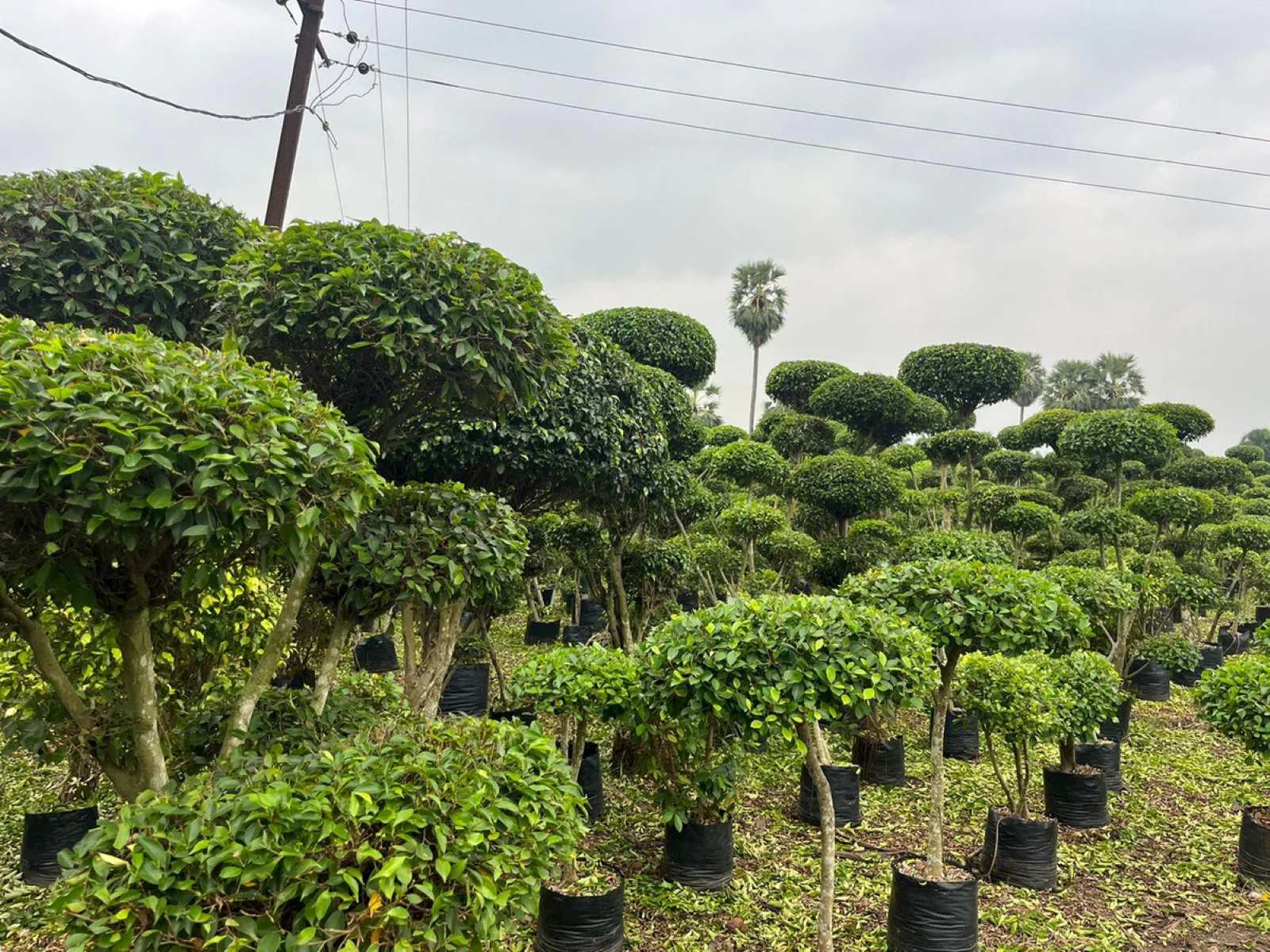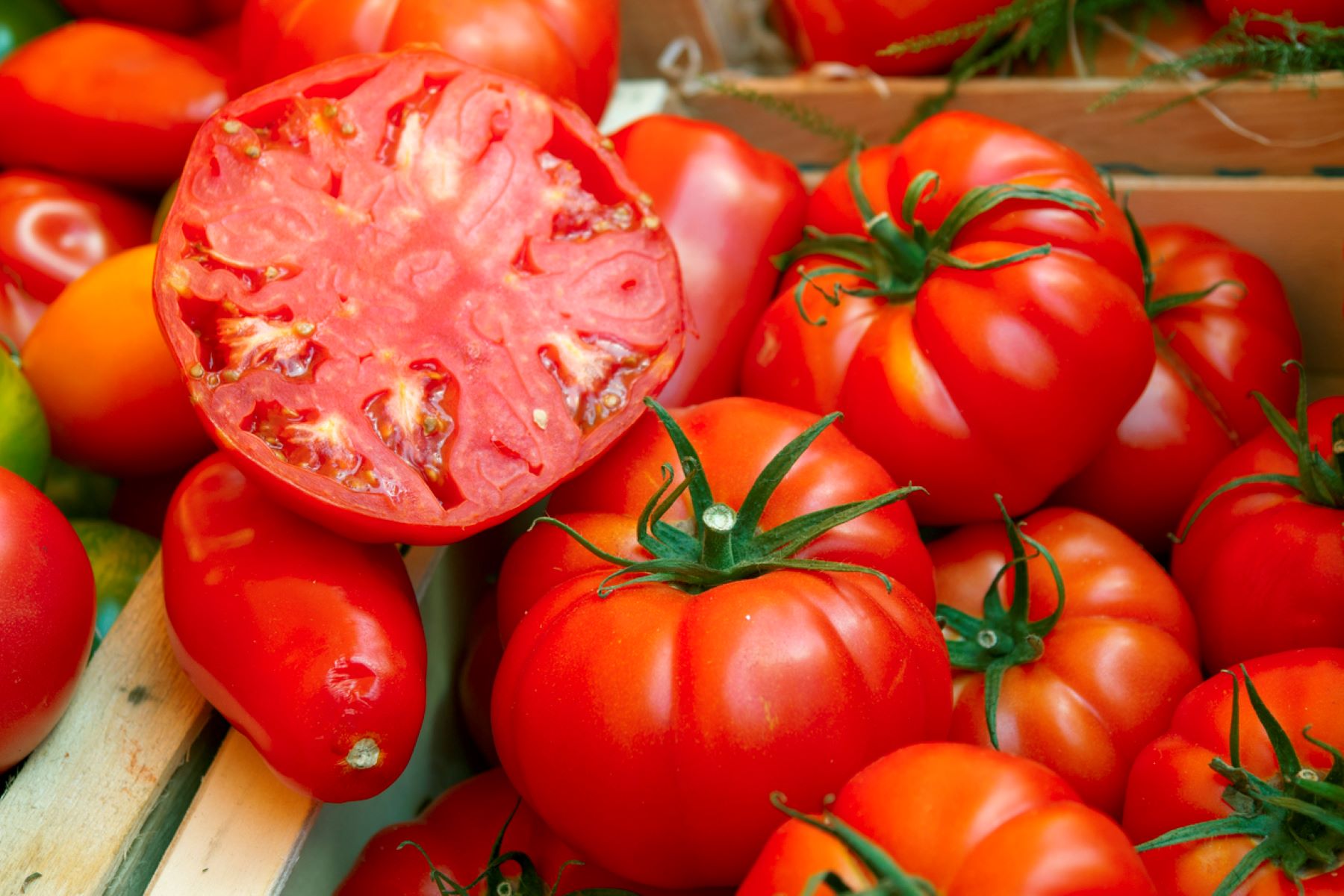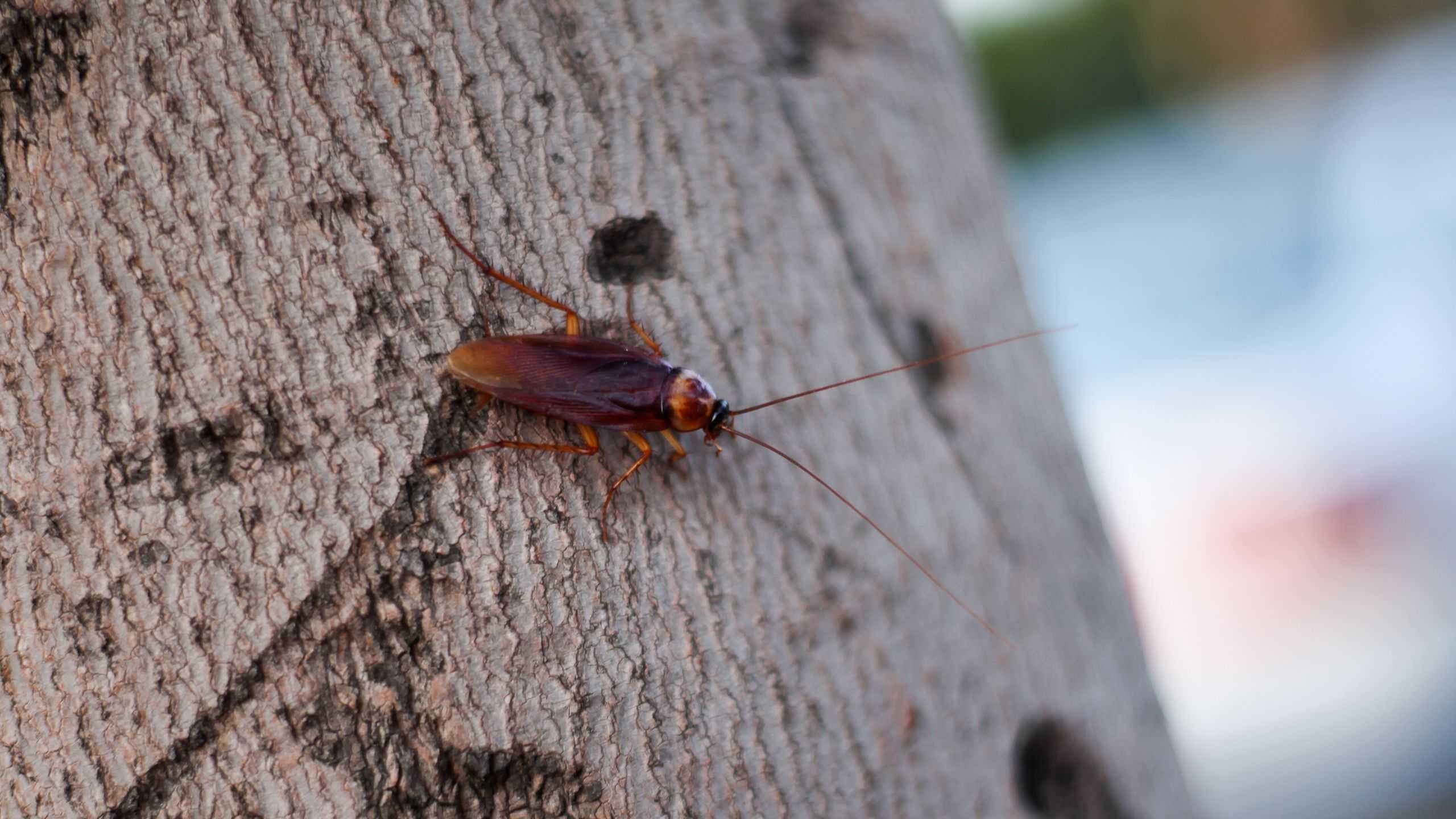Home>Home and Garden>Top Trees And Shrubs That Thrive In Salt Water!


Home and Garden
Top Trees And Shrubs That Thrive In Salt Water!
Published: January 18, 2024
Discover the best saltwater-tolerant trees and shrubs for your home and garden. Create a thriving coastal landscape with these resilient plants.
(Many of the links in this article redirect to a specific reviewed product. Your purchase of these products through affiliate links helps to generate commission for Regretless.com, at no extra cost. Learn more)
Table of Contents
Introduction
Coastal landscapes possess a unique allure, characterized by the invigorating scent of salt in the air and the soothing sound of waves crashing against the shore. While the coastal environment offers a picturesque backdrop for homes and gardens, it also presents challenges for cultivating lush greenery. The salt-laden air, high winds, and sandy soil can pose significant obstacles for traditional plants, making it essential for coastal gardeners to seek out salt-tolerant trees and shrubs that can thrive in such conditions.
In this article, we will explore the fascinating world of salt-tolerant trees and shrubs, shedding light on the remarkable varieties that have evolved to withstand the harsh coastal environment. From the majestic trees that sway gracefully in the ocean breeze to the resilient shrubs that add vibrancy to coastal gardens, we will delve into the diverse array of flora that can flourish in salt water.
Join us on a journey through the coastal landscape as we uncover the top trees and shrubs that have adapted to thrive in salt water. Embrace the beauty and resilience of these remarkable plants, and discover how they can transform coastal gardens into breathtaking havens of natural splendor.
Benefits of Salt-Tolerant Trees and Shrubs
Salt-tolerant trees and shrubs offer a myriad of advantages for coastal landscapes, making them invaluable additions to gardens in such environments. Their resilience and adaptability enable them to thrive in the challenging conditions posed by salt-laden air, high winds, and sandy soil. Here are the key benefits of incorporating salt-tolerant trees and shrubs into coastal gardens:
-
Resilience in Harsh Conditions: Salt-tolerant trees and shrubs have evolved to withstand the relentless assault of salty air and fierce coastal winds. Their robust nature allows them to endure the challenging environment, ensuring that they remain vibrant and flourishing amidst the coastal elements.
-
Enhanced Coastal Aesthetics: These salt-tolerant plants contribute to the visual appeal of coastal landscapes, adding a touch of natural beauty and diversity to the surroundings. Their lush foliage, vibrant blooms, and distinctive forms create a captivating tapestry of colors and textures, enriching the coastal scenery.
-
Erosion Control: The extensive root systems of salt-tolerant trees and shrubs play a crucial role in stabilizing the soil in coastal areas. By anchoring themselves firmly in the ground, these plants help prevent erosion, safeguarding the integrity of the coastline and protecting the surrounding environment.
-
Habitat for Wildlife: Salt-tolerant trees and shrubs provide vital habitats for a diverse array of wildlife, including birds, insects, and small mammals. Their presence fosters ecological balance and biodiversity, supporting the interconnected web of life in coastal ecosystems.
-
Low Maintenance Requirements: Many salt-tolerant trees and shrubs are well-suited for low-maintenance gardening, requiring minimal intervention once established. Their adaptability to coastal conditions often translates to reduced water and fertilizer needs, making them an efficient and sustainable choice for coastal gardens.
-
Windbreak and Privacy: In addition to their ornamental value, salt-tolerant trees and shrubs can serve practical purposes in coastal landscapes. They act as natural windbreaks, mitigating the impact of strong coastal winds and creating sheltered spaces. Furthermore, they can be strategically utilized to enhance privacy and create secluded areas within coastal properties.
-
Environmental Benefits: The presence of salt-tolerant trees and shrubs contributes to the overall environmental health of coastal regions. They play a role in carbon sequestration, air purification, and climate regulation, making them valuable allies in the ongoing effort to preserve and protect coastal ecosystems.
In summary, the benefits of incorporating salt-tolerant trees and shrubs into coastal landscapes extend far beyond their ornamental appeal. These resilient plants offer a host of advantages, ranging from erosion control and wildlife habitat provision to low maintenance requirements and environmental contributions. By harnessing the unique qualities of salt-tolerant flora, coastal gardeners can create thriving and sustainable ecosystems that harmonize with the coastal environment.
Factors to Consider When Choosing Salt-Tolerant Trees and Shrubs
When selecting salt-tolerant trees and shrubs for coastal landscapes, several key factors should be taken into consideration to ensure the successful integration of these resilient plants. Understanding these factors is essential for making informed choices that align with the specific requirements and characteristics of the coastal environment.
Soil Adaptability
The adaptability of salt-tolerant trees and shrubs to sandy, well-drained soil is a crucial consideration. Coastal soils are often characterized by high salinity levels and poor nutrient retention, necessitating plants that can thrive in such conditions. It is important to choose species that exhibit a tolerance for sandy soil and are capable of withstanding the salt content present in coastal substrates.
Salt Spray Resistance
Given the proximity to the sea, coastal landscapes are frequently subjected to salt-laden air and spray. When selecting salt-tolerant trees and shrubs, it is imperative to prioritize species that demonstrate a high degree of resistance to salt spray. This resilience enables the plants to endure the corrosive effects of salt, thereby ensuring their long-term health and vitality in coastal environments.
Wind Tolerance
Coastal areas are often characterized by strong winds that can exert significant stress on plants. When choosing salt-tolerant trees and shrubs, it is essential to consider their ability to withstand coastal winds. Species with flexible branches and sturdy trunks are well-suited for coastal landscapes, as they can effectively navigate the challenges posed by persistent coastal winds.
Growth Habit and Size
The growth habit and ultimate size of salt-tolerant trees and shrubs should be carefully evaluated to ensure that they align with the intended design and spatial constraints of the coastal garden. It is important to select plants that exhibit a growth habit conducive to the available space, taking into account factors such as canopy spread, height, and root system development. Additionally, considering the potential impact of the plant's growth on neighboring structures and vegetation is essential for creating a harmonious coastal landscape.
Ecological Impact
Assessing the ecological impact of salt-tolerant trees and shrubs is paramount, particularly in coastal ecosystems where biodiversity and environmental sustainability are of great significance. Opting for native species that support the local ecosystem and provide habitat and food sources for wildlife can contribute to the preservation and enhancement of coastal biodiversity. Additionally, considering the potential invasiveness of certain species and their impact on native flora is essential for maintaining ecological balance in coastal environments.
By carefully considering these factors when choosing salt-tolerant trees and shrubs, coastal gardeners can make informed decisions that align with the unique demands of the coastal environment. This thoughtful approach ensures the successful integration of resilient and adaptive plants, ultimately contributing to the creation of thriving and sustainable coastal landscapes.
Top Salt-Tolerant Trees for Coastal Areas
Coastal landscapes, with their proximity to salt water and exposure to strong winds, demand resilient and adaptable trees that can thrive in such challenging conditions. The following selection of salt-tolerant trees has proven to be well-suited for coastal areas, offering a harmonious blend of beauty and endurance.
1. Coastal Live Oak (Quercus virginiana)
The Coastal Live Oak, renowned for its iconic spreading canopy and sturdy, gnarled branches, is a quintessential presence in coastal ecosystems. This evergreen tree exhibits exceptional salt tolerance and can withstand the harsh coastal environment with ease. Its dense foliage provides valuable habitat for wildlife, while its robust root system aids in erosion control, making it a valuable addition to coastal landscapes.
2. Eastern Red Cedar (Juniperus virginiana)
The Eastern Red Cedar, a hardy and adaptable evergreen tree, thrives in coastal areas, displaying remarkable resilience to salt spray and winds. Its aromatic foliage and attractive blue berries add ornamental value to coastal gardens, while its ability to flourish in sandy, well-drained soil makes it an ideal choice for coastal landscaping projects.
3. Cabbage Palm (Sabal palmetto)
The Cabbage Palm, also known as the Sabal Palm, is a striking native tree that graces coastal landscapes with its iconic silhouette and robust nature. This salt-tolerant palm species is well-suited for coastal environments, where it can withstand salt spray and sandy soil. Its graceful fronds and impressive stature make it a captivating focal point in coastal gardens, contributing to the distinctive charm of coastal landscapes.
4. Southern Magnolia (Magnolia grandiflora)
The Southern Magnolia, celebrated for its glossy evergreen foliage and large, fragrant flowers, is a resilient and visually stunning tree that thrives in coastal regions. Its tolerance for salt-laden air, coupled with its ability to withstand strong winds, makes it an exceptional choice for coastal gardens. The Southern Magnolia's timeless elegance and aromatic blooms add a touch of grandeur to coastal landscapes, making it a cherished emblem of the southern coastal aesthetic.
5. Wax Myrtle (Morella cerifera)
The Wax Myrtle, a versatile and salt-tolerant shrub-like tree, is well-adapted to coastal conditions, where it flourishes in sandy soils and exhibits remarkable resistance to salt spray. Its aromatic foliage, attractive berries, and dense growth habit make it an invaluable addition to coastal landscapes, providing both ornamental and ecological benefits.
These top salt-tolerant trees for coastal areas exemplify the resilience and natural beauty that can thrive in the challenging coastal environment. By incorporating these remarkable trees into coastal landscapes, gardeners can create enduring and captivating ecosystems that harmonize with the coastal surroundings, embodying the spirit of resilience and natural splendor.
Top Salt-Tolerant Shrubs for Coastal Areas
Coastal landscapes, with their dynamic blend of salt-laden air, sandy soils, and relentless winds, demand resilient and adaptable shrubs that can thrive in such challenging conditions. The following selection of salt-tolerant shrubs has proven to be well-suited for coastal areas, offering a harmonious blend of beauty and endurance.
1. Dwarf Yaupon Holly (Ilex vomitoria)
The Dwarf Yaupon Holly, a compact and hardy evergreen shrub, is a resilient presence in coastal gardens. Its dense, dark green foliage and tolerance for salt spray make it an ideal choice for coastal landscapes. This versatile shrub can be utilized for hedging, screening, or as a focal point in coastal gardens, where its adaptability to sandy soils and salt-laden air shines through.
2. Oleander (Nerium oleander)
The Oleander, renowned for its vibrant and abundant blooms, thrives in coastal environments, displaying remarkable resilience to salt spray and winds. Its colorful flowers, available in a variety of hues, add a vivid splash of color to coastal gardens, while its ability to withstand salt-laden air and sandy soils makes it a popular choice for coastal landscaping projects.
3. Sweet Bay (Magnolia virginiana)
The Sweet Bay, a graceful and aromatic shrub, brings a touch of elegance to coastal landscapes with its glossy foliage and fragrant blooms. Its adaptability to salt-laden air and well-drained soils makes it well-suited for coastal gardens, where it can thrive amidst the challenging coastal conditions. The Sweet Bay's timeless charm and resilience make it a cherished addition to coastal landscapes.
4. Beach Rose (Rosa rugosa)
The Beach Rose, with its robust and fragrant blooms, is a resilient and visually captivating shrub that thrives in coastal regions. Its tolerance for salt-laden air, coupled with its ability to withstand strong winds, makes it an exceptional choice for coastal gardens. The Beach Rose's enduring beauty and hardy nature embody the spirit of coastal resilience, adding a touch of natural splendor to coastal landscapes.
5. Seaside Goldenrod (Solidago sempervirens)
The Seaside Goldenrod, a native coastal shrub known for its striking golden blooms, is well-adapted to the challenges of coastal environments. Its ability to thrive in sandy, well-drained soils and withstand salt spray makes it an invaluable addition to coastal landscapes, providing both ornamental beauty and ecological benefits.
These top salt-tolerant shrubs for coastal areas exemplify the resilience and natural beauty that can thrive in the challenging coastal environment. By incorporating these remarkable shrubs into coastal landscapes, gardeners can create enduring and captivating ecosystems that harmonize with the coastal surroundings, embodying the spirit of resilience and natural splendor.
Tips for Maintaining Salt-Tolerant Trees and Shrubs
Maintaining salt-tolerant trees and shrubs in coastal environments requires a strategic approach that accounts for the unique challenges and opportunities presented by the coastal landscape. By implementing thoughtful maintenance practices, gardeners can ensure the continued health, vitality, and aesthetic appeal of salt-tolerant flora in coastal gardens. Here are essential tips for effectively maintaining salt-tolerant trees and shrubs in coastal areas:
1. Soil Management
Coastal soils, often characterized by high salinity and poor nutrient retention, necessitate careful soil management for salt-tolerant trees and shrubs. Regular soil testing can provide valuable insights into the nutrient levels and pH balance of the soil, enabling gardeners to make informed decisions regarding soil amendments and fertilization. Incorporating organic matter and mulch into the soil can improve its structure and enhance moisture retention, supporting the growth and resilience of salt-tolerant plants.
2. Irrigation Practices
Balancing the water needs of salt-tolerant trees and shrubs in coastal environments is crucial for their overall well-being. While these plants exhibit a degree of salt tolerance, they still require adequate hydration, especially during periods of drought or high temperatures. Implementing efficient irrigation practices, such as deep watering to encourage deep root growth and utilizing drip irrigation systems to minimize water loss, can help maintain optimal soil moisture levels for salt-tolerant flora.
3. Pruning and Maintenance
Regular pruning and maintenance are essential for shaping the growth of salt-tolerant trees and shrubs and promoting their long-term health. Pruning helps remove damaged or diseased branches, enhances air circulation within the canopy, and shapes the overall structure of the plants. Additionally, routine maintenance tasks, such as removing debris, controlling pests, and monitoring for signs of stress or disease, contribute to the vitality and resilience of salt-tolerant flora in coastal landscapes.
4. Protection from Salt Spray
Shielding salt-tolerant trees and shrubs from direct exposure to salt spray can mitigate the potential adverse effects of salt accumulation on foliage and stems. Creating windbreaks using fencing, strategically positioning barrier plants, or utilizing protective coverings during periods of intense salt spray can help minimize the impact of salt on the plants, preserving their aesthetic appeal and overall health.
5. Monitoring and Adaptation
Regular monitoring of salt-tolerant trees and shrubs is essential for identifying any signs of stress, nutrient deficiencies, or environmental challenges. Observing the plants' response to the coastal environment and making necessary adjustments, such as modifying irrigation schedules or providing targeted supplemental nutrition, allows for proactive adaptation to the dynamic coastal conditions, ensuring the continued well-being of salt-tolerant flora.
By implementing these maintenance tips, coastal gardeners can nurture thriving and resilient salt-tolerant trees and shrubs, fostering enduring beauty and ecological vitality within coastal landscapes. Embracing the unique demands of the coastal environment and employing thoughtful maintenance practices enables the seamless integration of salt-tolerant flora, enriching coastal gardens with their remarkable resilience and natural allure.
Conclusion
In conclusion, the captivating allure of coastal landscapes is enriched by the remarkable resilience and natural beauty of salt-tolerant trees and shrubs. These adaptable plants, specially evolved to withstand the harsh coastal environment, offer a host of benefits for coastal gardens, ranging from erosion control and wildlife habitat provision to low maintenance requirements and environmental contributions. By harnessing the unique qualities of salt-tolerant flora, coastal gardeners can create thriving and sustainable ecosystems that harmonize with the coastal environment, embodying the spirit of resilience and natural splendor.
The careful selection of salt-tolerant trees and shrubs is essential for ensuring their successful integration into coastal landscapes. Factors such as soil adaptability, salt spray resistance, wind tolerance, growth habit, and ecological impact must be thoughtfully considered, guiding the choice of resilient plants that align with the unique demands of the coastal environment. By prioritizing native species and those well-suited to sandy, well-drained soils, coastal gardeners can establish vibrant and enduring ecosystems that contribute to the preservation and enhancement of coastal biodiversity.
The top salt-tolerant trees and shrubs highlighted in this article exemplify the resilience and natural beauty that can thrive in the challenging coastal environment. From the iconic Coastal Live Oak and Southern Magnolia to the hardy Dwarf Yaupon Holly and Oleander, these plants offer a harmonious blend of endurance and aesthetic appeal, adding depth and character to coastal landscapes. Their ability to withstand salt spray, strong winds, and nutrient-poor soils makes them invaluable allies in the creation of captivating and sustainable coastal gardens.
Effective maintenance practices, including soil management, irrigation, pruning, and protection from salt spray, are crucial for nurturing thriving and resilient salt-tolerant trees and shrubs in coastal environments. By implementing thoughtful maintenance strategies, coastal gardeners can ensure the continued health, vitality, and aesthetic appeal of these remarkable plants, fostering enduring beauty and ecological vitality within coastal landscapes.
In essence, the integration of salt-tolerant trees and shrubs into coastal gardens represents a harmonious convergence of resilience and natural splendor. These adaptable plants not only withstand the challenges of the coastal environment but also contribute to the visual appeal, ecological balance, and environmental sustainability of coastal landscapes. By embracing the unique qualities of salt-tolerant flora, coastal gardeners can cultivate thriving and enduring ecosystems that celebrate the indomitable spirit of nature amidst the coastal elements.









